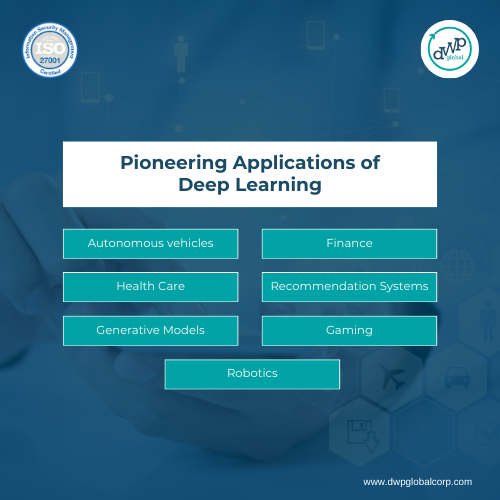- By: Admin
- January 11, 2024
- 1725 views

Machine Learning is one of the sub-domains within Artificial Intelligence (AI) dedicated to crafting algorithms and models that train computer systems to learn from data and enhance their performance on specific tasks over time. Rather than being programmed for a specific task, machine learning systems leverage statistical techniques to automatically recognize patterns, optimize output based on input for best results, or make predictions.
In the ever-evolving landscape of technology, the buzz around machine learning has reached a crescendo. From data scientists to computer scientists, the importance of understanding the essentials of machine learning cannot be overstated. This blog post focuses on decoding the intricate world of machine learning and exploring key concepts, machine learning algorithms, and their impact on different domains.
Unraveling The Basics: Machine Learning
Machine learning is also a popular subfield of Data Science that is capable of building algorithms capable of learning patterns from the data. These techniques, rooted in computer science, form the backbone of intelligent systems, enabling them to gain insights from the data and make accurate predictions.
The learning process in machine learning involves exposure to large volumes of data, allowing the system to identify underlying patterns and relationships. These systems use these patterns to make predictions or decisions without being programmed for each specific scenario. The main goal is to enable systems to adapt and boost their performance as they are exposed to more data, ultimately enhancing their ability to generalize and handle new, unseen situations.
The Pillars Of Machine Learning
Machine learning relies on several fundamental principles or pillars that form the basis of its operation. These pillars encompass key concepts and techniques essential for building and deploying machine learning models. Understanding and applying these pillars collectively contribute to the successful implementation of machine learning solutions, addressing challenges in data-driven decision-making across various domains. Some of the pillars of Machine Learning include:
Data Science
Machine learning and data science are intricately connected. Data science’s emphasis on extracting meaningful insights from vast datasets provides the fuel for machine learning algorithms. This synergy empowers data scientists to delve into customer preferences, generate accurate predictions, and revolutionize industries like retail through predictive analytics.
Deep Learning
Deep Learning is a special subset of machine learning that has neural networks with multiple layers. This approach, inspired by the human brain, has proven instrumental in tasks like image and speech recognition. Its application extends to natural language processing, where algorithms decipher and understand human language.
Some of the most important and renowned applications of Deep Learning involve:
- Image and speech recognition
- Autonomous vehicles
- Finance
- Health Care
- Recommendation Systems
- Generative Models
- Gaming
- Robotics
Renowned and established Artificial Intelligence Solution providers develop robust models for a wide variety of applications in various domains.

Essential Machine Learning Algorithms
Machine learning algorithms are at the heart of the machine learning process, driving the ability of systems to become intelligent, learn from data, and make predictions or decisions constantly. Various algorithms are designed for different types of tasks, and their applications span a wide range of domains.
Machine learning algorithms are the building blocks that decode patterns and relationships within data. From logistic regression to unsupervised Learning, each algorithm serves a unique purpose. Logistic regression, for instance, is a powerful tool for binary classification problems, while unsupervised learning methods like clustering reveal hidden patterns in data. At the same time, ensemble techniques aim to improve the accuracy of model results by clustering multiple models instead of applying a single model. Perceptrons of neural networks in deep Learning are similar to the neurons in the human brain, and these perceptrons are used to compute complex math and make predictions.
AI: An Integral Part of Machine Learning
Artificial intelligence (AI) is regularly used interchangeably with machine learning, reflecting their intertwined nature. AI encompasses a broader spectrum, including machine learning, as an integral part. Open-source projects and many resources have facilitated the democratization of AI, making it accessible to a broader audience.
Skills And Development in Machine Learning
In order to unlock the full potential of machine learning, individuals need a comprehensive set of skills. Programming skills are fundamental, as algorithms are implemented through code. Understanding statistics is crucial for interpreting results, while a solid grasp of mathematics provides the foundation for creating and fine-tuning models. There are several other skills, such as cloud computing, big data technologies, version control, data mining, machine learning algorithms, data science, data visualization, and more, to gain knowledge and be equipped to contribute to innovative solutions and advancements in the exciting world of machine learning.
Machine Learning: Techniques, Tools, And Resources
Machine learning is not a one-size-fits-all solution. It requires a toolbox of techniques and resources. From gaining insights from a small amount of new data to speeding up research and analysis, a diverse set of tools is essential. Techniques such as reinforcement learning contribute to the development of intelligent systems that constantly learn and adapt. Deep Learning has hugely contributed to image and speech recognition; Natural Language Processing (NLP) is used for understanding and analysis of human language.
There are several tools, such as
- TensorFlow,
- Scikit-Learn
- PyTorch
- Keras
- Microsoft Azure Machine Learning,
- RapidMiner,
And many more that are used for building, training, and experimenting with deep learning models.
These tools and techniques collectively contribute to the wide-ranging capabilities of machine learning, allowing for the development of intelligent systems across diverse applications.
AI and ML Software Development Services are essential parts of the development of growing companies that build their products.
The Positive Impact Of ML In Business
The retail industry stands as a testament to the positive impact of machine learning. By analyzing customer preferences and predicting trends, businesses can design their strategies to meet their customers’ needs, which, in turn, enhances customer satisfaction and drives profitability.
Machine learning is integral to modern business strategies that offer vast benefits that contribute to improved decision-making, customer satisfaction, efficiency, and competitiveness in the marketplace. As technology continues to advance, it performs an important role in shaping the business landscape and is likely to expand even further.
AI/ML Services is an inevitable need for businesses ranging from growing start-ups to established companies.
Conclusion: A Higher Level of Understanding
The importance of machine learning is continually growing as advancements in technology and the availability and accessibility of vast datasets enable the development of more sophisticated models. It has become a driving force in shaping the future of industries, improving processes, and solving complex challenges. Cracking the code of machine learning involves navigating through a maze of algorithms, techniques, and tools. As an ever-evolving field, staying updated on new developments and continuously developing skills is paramount. Machine learning is not just a technology; it’s a journey toward a higher level of understanding, one that unlocks the potential for innovation and transformation in various domains.

